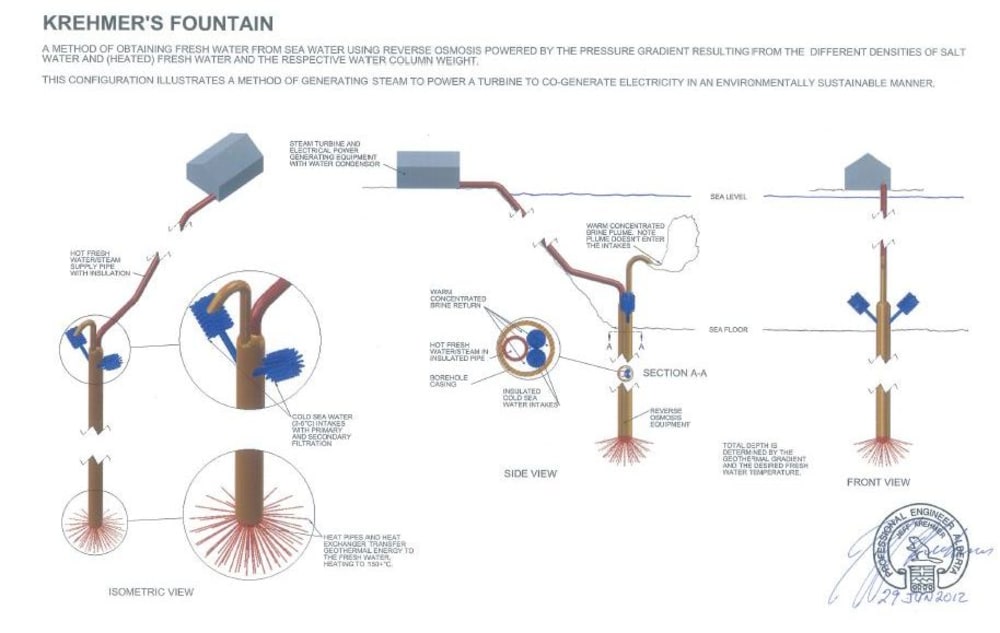World population is estimated at over 7 billion people. Global population is expected to peak at approximately 10 billion people. Many millions of people are currently starving, malnourished and don't have access to safe drinking water.
Water tends to be scarcest where it is needed the most, i.e. the Middle East, Australia, the Sahara Desert, Northern Mexico, the Atacama Desert, the Namib Desert and so forth. All of these regions could be productive farmland if they had access to fresh water. All of these regions border bodies of salt water.
Restricted access to fresh water can lead to war.
Reverse osmosis (RO) is a method of removing minerals from water with the use of membranes and pressure differentials. RO can produce potable water from brackish and salt water.
450m of sea water pressure head is sufficient to operate RO equipment if the fresh water is pumped to the surface.
- Many wells in the world obtain water from greater depths than this.
- The density of fresh water is less than that of salt water, so the pumping costs should be less than the cost of pressurizing the system. (Calculations assume pure fresh water; 1035 kg/m3 for sea water.)
- The pumping costs are reduced, the deeper the RO equipment is in the sea. This is because the difference in the density of the sea water and fresh water causes a pressure differential which would tend to raise the fresh water column.
Extrapolating this reasoning, a column of sea water 12 km deep would be able to run the RO equipment and pump the fresh water to the surface. 12,000m is about 1100m deeper than the Challenger Deep and comparable to the deepest borehole drilled on Earth. Deeper than 12,000m and the fresh water would flow above sea level.
As we dig deeper into the sea floor, the temperature rises. The density of the fresh water is reduced with an increase in temperature, so we don't need to mine as deep. It could be cost effective to use a heat pump to introduce the desired temperature differential to decrease the water density. It would be ideal if the fresh water could be heated by a hydrothermal vent. With enough heat transferred to the fresh water, electricity could be generated by a steam turbine at the surface, where the water could be condensed and used as desired.
Geothermal energy is available everywhere on Earth, if one digs deep enough. The combination of fresh water and energy production could make these projects more attractive.
All of the systems would be maintained by robots and ROVs. The rest is just engineering.
10 m3/s of water corresponds to 328,500,000 m3/year. 30.5 m3/s of fresh water flow would produce in excess of a cubic km of fresh water in a year.
Potential benefits: Fresh potable water production, sustainable economic activity, food production, improved living standards, new technological and geological knowledge, energy production, peace.
Environmental costs, post construction: Negligible.
Water is... ...life.
Like this entry?
-
About the Entrant
- Name:Jeff Krehmer
- Type of entry:individual
- Software used for this entry:SolidWorks
- Patent status:none

